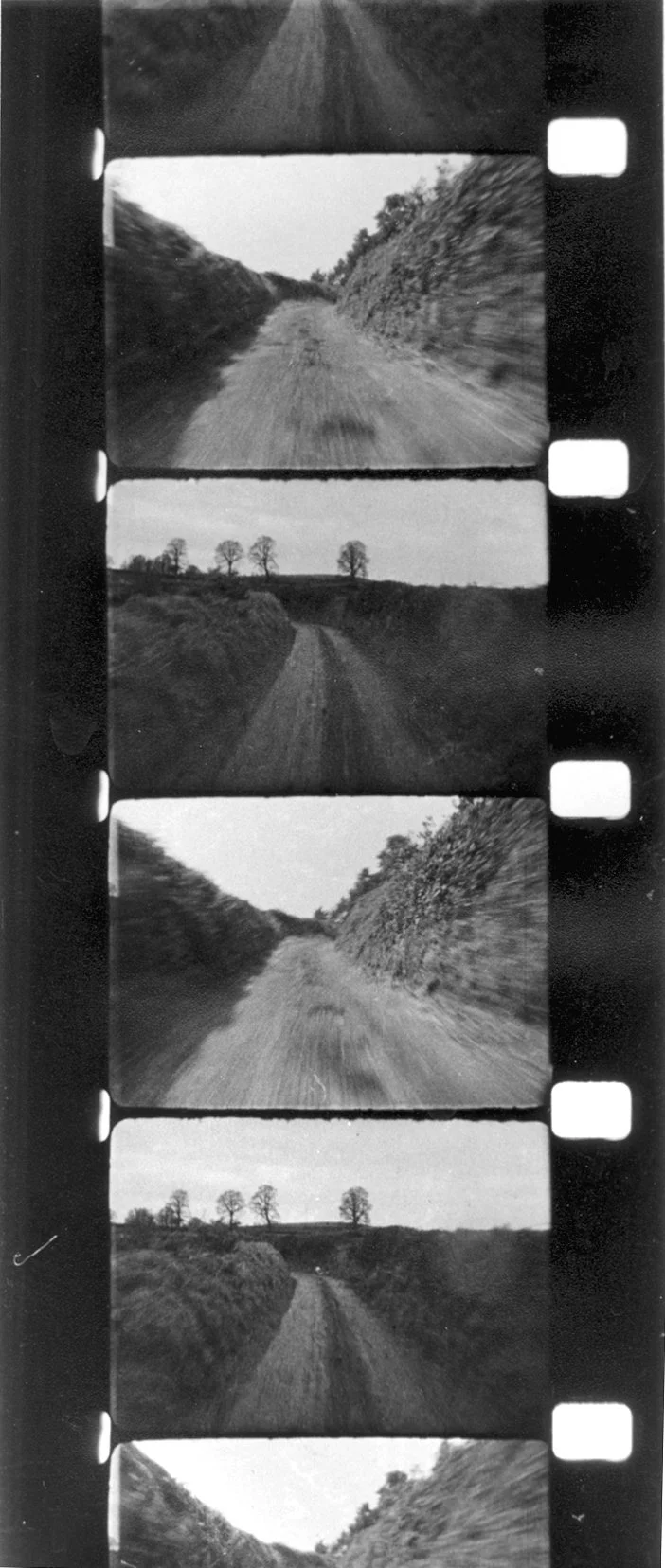FILM Lane
Sheepman and the Sheared (Part 4)
1974
HD Video, original 16 mm film
Mute, colour, 17 minutes 29 seconds
1974
16mm Film
"The film series was made within the workshops and the theoretical context of the London Filmmakers Co-operative and structural / material film. In the series, the coincidence of flora, fauna, other objects, processes and activities, with the film frame are in no way paramount to an inspection of the total film process by which an observation of this kind is made possible- specific conditions to do with both the natural world and human activity with that world are recorded with the camera, but is essentially subject to the observation and reaction of the filmmaker
In Film Lane, film is shot from a moving vehicle; from its roof pointing forward, from its rear pointing backwards. This occurs on two occasions; the summer of 1973 and the winter of 1974. The camera runs at either 24 fps or 12 fps The film is assembled according to pre-determined factors; (i) the 12 frame / half second bias as observed in Sheepman section; (ii) a double binary - alternating apparent movement away from and toward the surface of the screen, (a function relying on the perception of successive frames); (iii) combinations of one or other of these. The primary function of the 12 frame opaque film is, as in the Sheepman section, not as markers of time but as a constant factor comparative to those frames they surround." (1976)
Ref: perspectival representation is counted in Film Lane, which utilises a mode of representation which both demands and undermines the viewers conscious construction of spatial relations. The alternation/inversion of separate tracking shots plays on the unstable relation between the picture surface and signified fictive space. The interruption of frame to frame continuity becomes a disruption and a destabilisation of perspectival space which is intensified by the directional axes of the image, (the edges of the hedges and the road), which focus on a central vanishing point. A form emphasising that the signification of space is constituted within temporal parameters, to adapt a phrase of Leotard's: Movement ... is given to the eye of the spectator for what it is - a simple temporal difference in the visual field.[2] Rod Stoneman[1]
Though radically different in impact, the deliberate pace and lengths of Part 3 act as the other side of the issue coined by parts 1 and 2. The similarity of concerns is directly addressed in part 4, Film Lane, which combines the rigid editing structure of the first parts with the seasonal recording of local landscape imagery in Part 3. But yet another element comes to the fore - that of movement. The original movement of the car up and down the lane and the apparent movement imparted by editing, complicate the sense of movement on the screen and effectively re-flatten the deep space established in the previous section.Deke Dusinberre {3]
[1] Stoneman, Film-Related Practice and the Avant-garde, Screen, 1979
[2] Jean-Francois Lyotard, 'Acinema', Wide AngIe vol 2 no 1, 1978.
[3] Deke Dusinberre, Perspectives on British Avant-Garde Film, Hayward Gallery ACGB, 1979?
